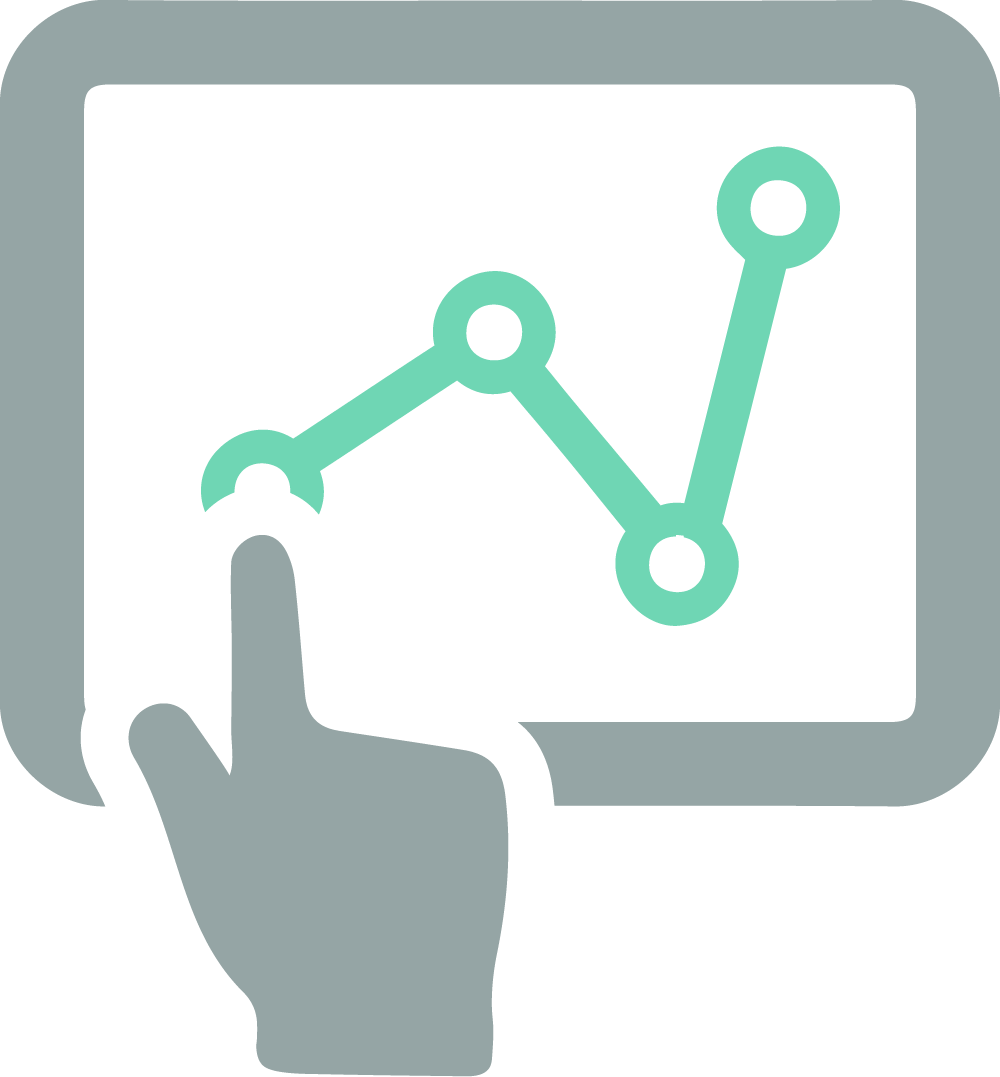
Data visualisation
The goal of data visualization is to present data in a way that is easy to understand and analyze, making it easier for users to identify trends, patterns, and relationships within the data. By transforming data into visual representations, data visualisation can help users communicate insights and findings more effectively, and can lead to better decision-making.
For a business to be able to visualize their data means they can represent their data graphically and in a way that is easily understandable. It can help businesses to quickly identify patterns, trends, and outliers in their data. With data visualization, businesses can create interactive dashboards, reports, and charts that allow them to explore their data and gain insights.
Data visualization can enable businesses to make better decisions by presenting complex data in a more accessible and intuitive format. By visualising data, businesses can quickly identify relationships and trends that might not be immediately apparent from a table of numbers. This can lead to more informed decision-making and can help businesses to identify areas where they need to make improvements or take corrective action.
Moreover, data visualisation can help businesses to communicate their findings and insights more effectively. By presenting data visually, businesses can make it easier for stakeholders to understand the significance of their data and to see the impact of their decisions. This can be particularly important when presenting data to non-technical stakeholders who may not be familiar with the underlying data.
Take the Covid 19 tracking map, for example. Obviously the start of the pandemic was an incredibly challenging time for governments and private sector companies alike.
The New York Times created an interactive map that allowed readers to see the spread of COVID-19 around the world in real-time. The map used data visualisation to display the number of cases and deaths in each country, allowing users to easily see which areas were most affected. The map quickly became one of the most popular features on the Times’ website, and was praised for its clear and informative design. The COVID-19 tracking map was created by Johns Hopkins University and is one of the most well-known examples of data visualisation in the context of the COVID-19 pandemic. The map provides an interactive, real-time display of COVID-19 cases and deaths around the world, using data from various sources such as the World Health Organization (WHO) and national health agencies.
In the UK, there are a number of similar COVID-19 tracking tools and dashboards that provide visualisations of data on cases, deaths, and other metrics related to the pandemic. For example, the UK government’s coronavirus dashboard provides daily updates on the number of cases, deaths, and tests in the UK, as well as breakdowns by region and age group. Other organisations and media outlets have also created their own COVID-19 dashboards and visualisations to help people understand the impact of the pandemic on different communities and sectors.
The COVID-19 tracking map is indeed an excellent example of data visualisation, as it takes complex data sets from various sources and presents them in a way that is easy to understand and engage with for users. The map utilizes interactive visualizations such as color coding and scaling to represent the number of COVID-19 cases and deaths in different countries, making it easy to quickly see trends and patterns.
The visualizations on the COVID-19 tracking map help users to better understand the global impact of the pandemic and make informed decisions about how to respond. The map has been widely praised for its clarity and accessibility, and has been used by government officials, healthcare professionals, and members of the public to track the spread of the virus and develop strategies for mitigating its effects.
In the UK, there are similar COVID-19 dashboards and tracking tools that use data visualisation techniques to make information about the pandemic more accessible to the public. These visualisations help people understand the impact of the virus in their communities and make informed decisions about their health and safety.
Data visualisation really can be considered a bridge between complex, abstract data and easy-to-grasp concepts that the average professional can understand. By presenting data in a visual format, it becomes easier to identify patterns, trends, and relationships that might not be immediately apparent when looking at raw data. This can help businesses and professionals make informed decisions based on data, rather than relying on intuition or guesswork. In addition, data visualisation can help to communicate complex information and ideas more effectively, making it a powerful tool for presenting findings to those interested in a company and its decision-makers.